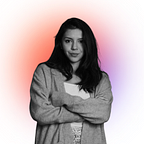Ironhack Berlin
“For the organic food, the less it’s designed, the better it is.”
Healthy eating has been a subject of discussion over the last decades, as society becomes more aware of the impact that pesticides have on their health and also environment.
Organic food has made its way to supermarkets to fulfill the need for healthier options, however, due to its high cost, it remains a luxury item that is out of reach to the average household.
But the problem doesn’t end there. One of the reasons why organic food is expensive is because it requires a lot of work and time from the farmers, who then, must share their earnings with big chains, making it an unsustainable model.
This “Wicked Problem” case study was our first bootcamp project at Ironhack Berlin. We put into practice what we learnt during our first week and were given five days to come up with a solution.
A wicked problem is a social or cultural issue or concern that is difficult to explain and inherently impossible to solve. Examples of wicked problems in today’s society include things like education design, financial crises, health care, hunger, income disparity, obesity, poverty, terrorism, and sustainability.
Double Diamond
The Double Diamond design model is a system designers can follow in their creative process. The British Design Council made it official following a long study that involved corporate giants such as Microsoft, Starbucks, Sony and LEGO.
CASE STUDY
“Making Organic Food Available to Everybody”
What are our customers needs?
Empathy is the first step in design thinking, because it allows us to understand others on a mental and emotional level, it helps us designers deliver a solution that will make our users happy and fulfilled.
With empathy as a mindset, we were able to dive into the process of understanding our user’s needs. For that we elaborated a survey that consisted of 15 questions, which were demographic, multiple choice, single-answered and open ended.
The survey was shared across LinkedIn, Facebook groups (families, neurodivergents, expats), Slack and Twitter. By the end of the first day of our project we had 63 participants and we could start analyzing their answers.
I found this part to be really exciting because the results challenged our initial speculations, and made us more aware of the importance of a non-biased state of mind in UX.
These were our findings:
We found out that users don’t seem eager to spend much money on organic food, even though they agree the consumption of organic food is important.
Thanks to all this data, it was clear for us then, our product will have to:
be cheap
be close
be personal
be easy
offer both meat & vegetables
Based on these findings we were able to move forward and ask ourselves “How Might We”, this exercise allowed us to dive deeper into possible solutions and formulate a problem statement.
Problem Statement
Our organic food app was designed to help consumers buy directly from farmers, eliminating the extra costs that supermarkets would take and lowering their price. It will offer concise information about where and how to find organic markets nearby, while also offering users the opportunity to purchase “imperfect food”, which is food that although still edible won’t be sold because it’s not in perfect conditions.
By offering low prices, facilitating personal contact between farmers and consumers, offering closer markets and tackling responsible food waste,
our app will fulfill the needs of a community that is raging for cheap
healthy food.
We will know our app is successful by measuring the amount of new users, number of orders, returning customers and ratings across all digital channels.
Customer Persona
Thanks to all the data gathered so far, we were able to create our first user persona.
Meet expat Judith, she is our average customer, she just turned 30 years old, she is a PhD student and as such she struggles with finding cheap organic food, this frustrates her since it doesn’t allow her to live the healthy life she wishes to have.
After creating her persona we worked on her happy path.
Wireframes & Prototype
Judith’s persona helped us see more clearly what features our app should have and after brainstorming we came up with the following:
- Our app should show all nearby organic markets to users.
- Our app should offer cheap organic food.
- Our app should allow users reserve food.
- Our app should allow users pay in advance if desired.
Take a look at our wireframes here.
